Mad Cow Disease: What Causes It?
Mink, A Species Susceptible to Spongiform Encephalopathy

Mink are among the many species that fall victim to transmissible spongiform encephalopathy--a malady known in popular culture as mad cow disease. In mink, the name for this affliction is transmissible mink encephalopathy. Theories about these transmissible encephalopathies abound, but to date researchers have at least as many questions as answers.
In August of 2018 the Florida Department of Agriculture announced that a cow had been diagnosed with BSE, Bovine Spongiform Encephalopathy. This was the sixth cow, over a period of years, to be diagnosed with mad cow disease in the United States. Many more cases have been diagnosed in other parts of the world...one in the UK as recently as October of 2018.
News reports about the Florida incident varied. One article assured readers that the form of BSE detected in this cow was "not contagious". 1 Other reports explained that the cow suffered from a form of the disease that was different from "classic" mad cow disease. 2 What every report (that I read) emphasized was that the Florida cow in no way presented a danger to humans.
While it is true that the dead cow in Florida no longer represented a danger to humans, it's also true that its existence throws up red flags, because of the uncertainty surrounding spongiform encephalopathies. The lack of certainty about BSE makes every case a major news event for the agricultural industry, the health community, and research scientists. Major because the disease does cross species, and it does infect humans, sometimes in surprising ways. Fear of BSE getting into the food chain can virtually destroy the beef industry.
Various types of spongiform encephalopathies have been found in domestic animals and in wild animals. Whenever the disease strikes the course is unremittingly cruel and inevitably fatal. Below is a chart that describes how the disease may typically progress in humans. Each one of the arrows represents a set of symptoms. The size of the arrow indicates the frequency of that symptom in a cross section of patients. However, as the chart demonstrates, everyone afflicted with the disease ultimately ends up in the same dismal condition. And inevitably, the disease kills.
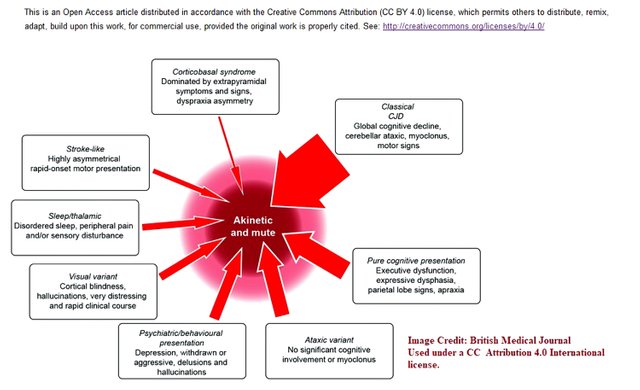
TSEs, Transmissible Spongiform Encephalopathies
The U. S. National Institutes of Health has a website that describes the group of diseases characterized as Transmissible Spongiform Encephalopathies. BSE is one of those. A disease in sheep and goats, called Scrapie, is another. Scrapie has been observed in animals since at least 1732.
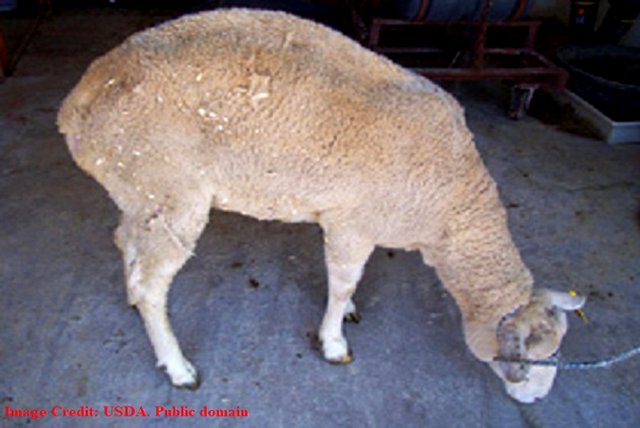
The picture shows a sheep that is presenting with symptoms of Scrapie. This link takes you to a video of an animal severely affected by the disease. The video was made by a BMC veterinary research team: Simmons H, Simmons M, Spencer Y, Chaplin M, Povey G, Davis A, Ortiz-Pelaez A, Hunter N, Matthews D, and Wrathall A.
TSE: Transmissible Spongiform Encephalopathy in Humans
The most well-known form of transmissible spongiform encephalopathy in humans is Creutzfeldt-Jakob disease, CJD. The route of transmission for this disease varies. Some cases have resulted from the administration of growth hormone to children, because the material to make the drug was harvested from infected cadavers. Other routes of transmission include corneal transplants and contaminated surgical instruments. It wasn't until 1996, that the first suspected case of food-borne transmission of BSE (in humans) was reported.
Whatever species TSE affects, all manifestations of the disease have one thing in common: the presence of prions.
Human Brain Tissue Showing Damage From CJD (Variant)
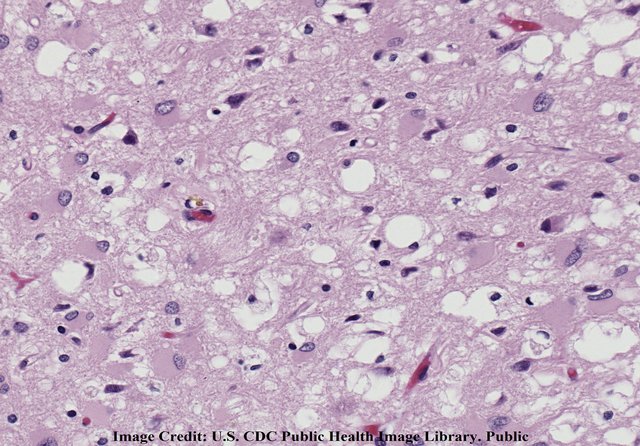
What Are Prions?
An excellent article describing prions in depth may be found here. To summarize what that article says: prions aren't viruses or bacteria. They have no DNA or RNA. They're just bits of protein that become misshapen (they fold) and they influence other proteins to become misshapen. The infectious character of prions is demonstrated in the mouse model below.
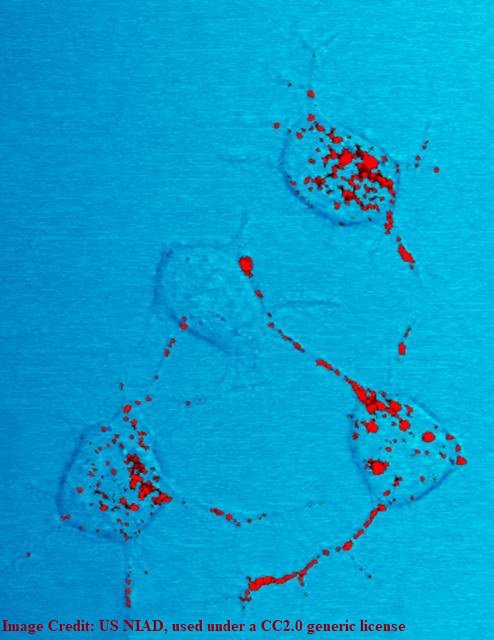
The path of infection can be traced by following the red dots. This picture shows four nerve cells. The prion infection travels along neurites. In this way, a prion infection spreads throughout the body. By end-stage disease, the infectious proteins may be distributed systemically. They may be found in the eyes, the gut, and even the tongue.
It is the apparent infectious nature of prions that has led researchers to conclude prions cause TSEs. Most scientists who work with TSEs assume this to be the case. However, there is a body of research that suggests science should consider another culprit. A candidate for that role is spiroplasma.

If you click on the picture, you can see spiroplasmas swimming. This variety of spiroplasma, S. eriocheiris, is fatal to the Chinese Mitten crab.
How Are Animals Exposed to Spiroplasmas?
This microorganism is found in many places. In insects, it can have a symbiotic relationship (help them), or it can be pathological (make them sick). One insect that carries spiroplasma as a symbiont is the leaf-cutting ant. Spiroplasmas are part of the gut biome in this ant. Spiroplasmas may also be found in termites and ticks. One 2012 study, conducted in the Ardennes, found that of 267 tick species collected, 76% carried spiroplasmas as symbionts. So, it's safe to say there are abundant sources of spiroplasmas in nature.
The case for insects as vectors of spiroplasmas was described in a journal called, Annals of Agricultural and Environmental Medicine. This article asks the question, is spiroplasma an emerging arthropod-borne disease?
Leaf-Cutting Ant
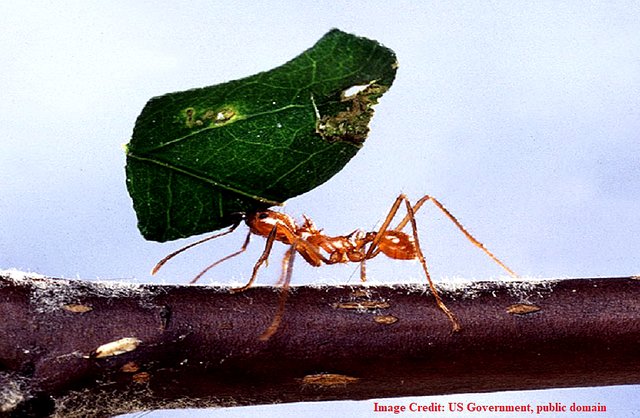
It's not surprising, given the widespread availability of spiroplasmas, that ruminants may be contaminated merely through contact with soil. One variety of spongiform encephalopathies found among wild ruminants is CWD, chronic wasting disease. The US CDC classifies this disease as a prion disease and suggests that such animals be kept out of the human food chain, although "To date, there have been no reported cases of CWD infection in people." 3
An article in the Journal of Neuropathology and Experimental Neurology explains how ingestion of spiroplasmas by ruminants may lead to the development of spongiform encephalopathy. Spiroplasmas bind to clay and create a biofilm, which is virtually impervious to chemical and physical assault. The microorganism has the ability to pass through the gut of the animal and migrate to tissue in the nervous system. Analysis of these clay-bound spiroplasmas reveals that they are identical to spiroplasmas found in the tissue of infected animals.
A Deer Suffering from Chronic Wasting Disease

The case for spiroplasmas as the single cause of spongiform encephalopathies has not yet been made, although there are researchers who feel they may be on the correct path by exploring this line of inquiry. In one study, Novel Spiroplasma Spp. Cultured From Brains and Lymph Nodes From Ruminants Affected With Transmissible Spongiform Encephalopathy, researchers were able to isolate and culture spiroplasmas in tissue that had been harvested from animals that succumbed either to Scrapie or CWD. The authors of the study conclude that spiroplasma is a TSE pathogen and is " a candidate (for being a) causative agent of TSE". 4
Spiroplasma Disease in Corn
This blog really began with a plant, and an ant. When I wrote an article about ants in hospitals, I learned that leaf-cutting ants are very hard to eradicate. They have a special diet and are not attracted to traditional baits. Because of their diet, they harbor spiroplasmas in their gut. Is that bacteria harmless, I wondered? Then I found out that spiroplasmas have been associated with spongiform encephalopathies. Eventually I learned that leaf-cutting ants infect plants with spiroplasmas through saliva. The corn section shown in the picture below is taken from just such a plant. The corn is suffering from a disease called Spiroplasma kunkelii. My curiosity was piqued, and this blog was born.
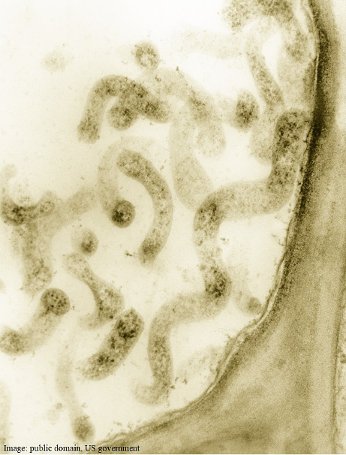
Conclusion
Transmissible spongiform encephalopathies encompass a broad range of disorders. Do prions cause the diseases? If they do, what gives rise to the prions? Does the key to understanding TSEs reside with spiroplasmas? Maybe. Maybe not. Whatever the answer to that question turns out to be, there's no doubt that spiroplasmas will be the subject of much research in the future.


Footnotes
1 Mad Cow Disease Diagnosed in Florida Beef Cow
https://6abc.com/health/mad-cow-disease-diagnosed-in-florida-beef-cow/4088696/
2 Florida cow tests positive for rare type of mad cow disease. State says no threat to public
https://www.miamiherald.com/news/local/environment/article217518390.html
3 Public Health Image Library
https://phil.cdc.gov/Details.aspx?pid=10131
4 Novel Spiroplasma Spp. Cultured From Brains and Lymph Nodes From Ruminants Affected With Transmissible Spongiform Encephalopathy
https://academic.oup.com/jnen/article-abstract/77/1/64/4633865
Some Sources Used in Writing This Blog
Novel Spiroplasma Spp. Cultured From Brains and Lymph Nodes From Ruminants Affected With Transmissible Spongiform Encephalopathy*,](https://academic.oup.com/jnen/article-abstract/77/1/64/4633865)
A Logical Causative Agent, The CWD Foundation Chronic Wasting Disease:A Review and working hypothesis, the Agent and its Transmission PART I: A Logical Causative Agent
http://www.stopcwd.org/library/cwd_paper.cfm
Spiroplasma spp. from transmissible spongiform encephalopathy brains or ticks induce spongiform encephalopathy in ruminants
https://www.life.umd.edu/classroom/HONR299J/spiroplasma%202007.pdf
Characterization of Spiroplasma mirum and its role in transmissible
spongiform encephalopathies
https://digitalcommons.lsu.edu/cgi/viewcontent.cgi?article=4011&context=gradschool_dissertations
What are prions?
http://www.prionalliance.org/2013/11/26/what-are-prions/
Spiroplasma citri Movement into the Intestines and Salivary Glands of Its Leafhopper Vector, Circulifer tenellus
https://apsjournals.apsnet.org/doi/pdf/10.1094/PHYTO.1999.89.12.1144
Mycoplasma and Spiroplasma
https://www.researchgate.net/publication/288227826_Mycoplasma_and_Spiroplasma
Spiroplasmas: infectious agents of plants, arthropods and vertebrates.
https://www.ncbi.nlm.nih.gov/pubmed/9286068
Learn more about Transmissible Mink Encephalopathy
https://www.sciencedirect.com/topics/biochemistry-genetics-and-molecular-biology/transmissible-mink-encephalopathy
Mad cow disease diagnosed in Florida beef cow
https://6abc.com/health/mad-cow-disease-diagnosed-in-florida-beef-cow/4088696/
Florida cow tests positive for rare type of mad cow disease. State says no threat to public.
https://www.miamiherald.com/news/local/environment/article217518390.html
Practical Neurology
https://www.ncbi.nlm.nih.gov/pmc/articles/PMC5520355/figure/F1/
Transmissible Spongiform Encephalopathies Information Page
https://www.ninds.nih.gov/Disorders/All-Disorders/Transmissible-Spongiform-Encephalopathies-Information-Page
United States Department of Agriculture Animal and Plant Health Inspection Service
https://www.aphis.usda.gov/aphis/ourfocus/animalhealth/nvap/NVAP-Reference-Guide/Control-and-Eradication/Scrapie
File:Atypical-scrapie-in-sheep-from-a-UK-research-flock-which-is-free-from-classical-scrapie-1746-6148-5-8-S1.ogv
https://commons.wikimedia.org/w/index.php?title=File%3AAtypical-scrapie-in-sheep-from-a-UK-research-flock-which-is-free-from-classical-scrapie-1746-6148-5-8-S1.ogv
Creutzfeldt-Jakob Disease Fact Sheet Scrapie
https://www.ninds.nih.gov/Disorders/Patient-Caregiver-Education/Fact-Sheets/Creutzfeldt-Jakob-Disease-Fact-Sheet
Iatrogenic Creutzfeldt-Jakob Disease from Commercial Cadaveric Human Growth Hormone
https://www.ncbi.nlm.nih.gov/pmc/articles/PMC3647424/
Ophthalmic surgery and Creutzfeldt-Jakob disease
https://www.ncbi.nlm.nih.gov/pmc/articles/PMC1772117/
Detection of transmissible spongiform encephalopathies
https://patents.google.com/patent/US6033858
Creutzfeldt-Jakob disease and blood transfusion safety.
https://www.ncbi.nlm.nih.gov/pubmed/29359329
What Is a Prion?
https://www.scientificamerican.com/article/what-is-a-prion-specifica/
Public Health Image Library
https://phil.cdc.gov/Details.aspx?pid=10131
What Are Prions?
http://www.prionalliance.org/2013/11/26/what-are-prions/
Bovine Spongiform Encephalopathy Mad Cow Disease, BSE
http://www.cfsph.iastate.edu/Factsheets/pdfs/bovine_spongiform_encephalopathy.pdf
Spiroplasma eriocheiris sp. nov., associated with mortality in the Chinese mitten crab, Eriocheir sinensis
https://www.microbiologyresearch.org/docserver/fulltext/ijsem/61/4/703_ijs020529.pdf?expires=1546233318&id=id&accname=guest&checksum=43C926FDDBDBE2041DD36AFDBB70DCD8
High levels of co-infection with pathogens and symbionts in ticks from the Ardennes
https://www.sciencedaily.com/releases/2016/03/160317150012.htm
Spiroplasma - an emerging arthropod-borne pathogen?
https://www.ncbi.nlm.nih.gov/pubmed/26706960)
Chronic Wasting Disease (CWD)
https://www.cdc.gov/prions/cwd/index.html)
The case for involvement of spiroplasma in the pathogenesis of transmissible spongiform encephalopathies.
https://www.ncbi.nlm.nih.gov/pubmed/24423635
Identification and Characterization of Proteinase K-Resistant Proteins in Members of the Class Mollicutes
https://iai.asm.org/content/iai/59/3/1037.full.pdf
Novel Spiroplasma Spp. Cultured From Brains and Lymph Nodes From Ruminants Affected With Transmissible Spongiform Encephalopathy
https://academic.oup.com/jnen/article-abstract/77/1/64/4633865
Spiroplasmas: infectious agents of plants, arthropods and vertebrates.
https://www.ncbi.nlm.nih.gov/pubmed/9286068
Kuru: Genes, Cannibals and Neuropathology:
https://www.ncbi.nlm.nih.gov/pmc/articles/PMC5120877/

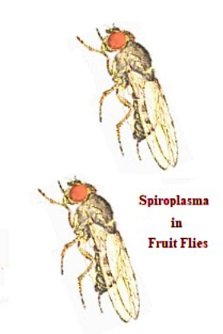

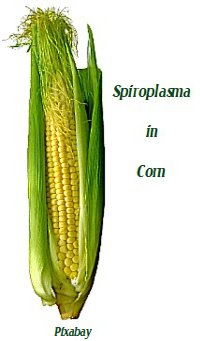
This post has been voted on by the SteemSTEM curation team and voting trail in collaboration with @utopian-io and @curie.
If you appreciate the work we are doing then consider voting all three projects for witness by selecting stem.witness, utopian-io and curie!
For additional information please join us on the SteemSTEM discord and to get to know the rest of the community!
Thank you, SteemSTEM! It means a lot.
Wow! Great work! I have learned so much from all of your interesting information here. I always wondered how many dangerous diseases could be spread from the wildlife food chain, from the tiniest of insects to animals, fish, poultry, plants and humans. Pretty scary stuff. Congratulations on your well deserved SteemStem votes. : )
🙂
Seems you put lots of efforts making this post. All the best @agmoore
I do appreciate your good wishes. I love to do research and so writing the article is great fun for me. Of course, I always hope my writing will be read and enjoyed.
Very interesting article, I have to say I've always found interesting the topic of spongiform encephalopathy and prions. Fun fact, prions can be transmitted from one human to another in the same fashion as TSE, that is, by eating contaminated flesh; it is common in cannibalistic aboriginal tribes.
Thank you! Never know when I start on one of these topics if people will actually take an interest. Glad this one did find an audience. As for cannibalism, yes, true. Note the reference to Kuru in my sources. I don't think it's a good idea to eat brains, period. I know when I was a child my landlord gave us a goat's head as a special holiday treat (Sicilian delicacy). I don't think I'd ever eat them again :)
Thanks for stopping by.
Wow, I have to ask, did you ever try it? How does it taste? I've never been interesting in those squishy parts of the animal (brain, tongue, intestines), can't deal with the texture.
I was about 13, and always eager to try new things. This was certainly new to me. Yes, I ate it, and it was weird and squishy. Later on, I came to understand why such a tradition would grow. In a poor culture (Sicily was very poor), you don't throw anything out. Goat's head, pig's feet...everything is turned into food. Nowadays, I'm a little more narrow in my food selections :)
I'd wanna try brains but now your article put the scaries in me.
It's not because of poverty. In nature, the alpha wolves eat the organs first. Kidney, heart, and liver are wonderful if you know how to cook them. Fortunately, we still do in Cyprus!
Got to say though, I found no redeeming qualities for the chicken feet I ate in a Chinese restaurant (claws and all), though the Asians who had me try it were really surprised I didn't like them...
Yeah, don't eat brains. I didn't find it rewarding, as I remember, and it's not worth the risk. On the other hand, there was at time when I couldn't resist pickled pig's feet. That time has passed. I won't eat a pig anymore... actually have tried not to eat any animal. But that is difficult to manage, for me, personally.
I always thought it was poverty that led to the consumption of feet, skin and brains, which I think don't have much nutritive value. Kidneys, hearts and livers, on the other hand are quite rich, aren't they?
Sicilians (my mother's heritage) are quite adept at using organ meat, so I grew up with this fare as part of my diet.
Hi @agmoore!
Your post was upvoted by Utopian.io in cooperation with @steemstem - supporting knowledge, innovation and technological advancement on the Steem Blockchain.
Contribute to Open Source with utopian.io
Learn how to contribute on our website and join the new open source economy.
Want to chat? Join the Utopian Community on Discord https://discord.gg/h52nFrV
Thank you, @utopian-io! I'm very grateful!
Great read. I have not kept up with prion research in a long while. I read years back that perhaps a transmissible compound was guiding the proteins to misfold. I wonder if the Spiroplasmas create a metabolite that causes this to happen. CryoEM would be a great tool for researching this problem BTW. Have you come across anyone using this tool in your searches?
Thanks for the compliment! I worked hard and loved every minute of it. I think I would have been happy in a life of research... learning that a little late:)
One of the leading researchers in this area is Frank O. Bastion...here's an interview (date?) in which he discusses the evolution of his thinking and his work. And here's an article that describes the use of CryoEM, in relation to prion research but not spiroplasmas.
A fascinating line of research, isn't i? I appreciate your reading, and your feedback!
Obviously extremely well researched and presented. A little over my li'lle ol' head but, I did garnish a little of the pertinence and can only wish you, agmoore, all speed in pursuing the solution which, no doubt, will aid the research in discovering a solution/remedy or, antidote, or whatever is needed to combat this malady. Thanks for your energetic article.
Reading all that stuff isn't always easy (my background is in history and literature), but I love it. And then following the trail and piecing it together is like doing a puzzle. I'm glad it caught your interest. Thanks for reading and commenting!
Keep at it agmoore, you do have a talent.
Thank you!
I'm a bit late to the party as usual!
A couple days ago I was reading the passage below from the book How not to Die, from Michael Greger, who is a vegan who scientifically backs his veganism:
The numbers are all citations, and I can give them to you if you want.
Given that we got mad cow from cows, your post gives further support to the claim in the passage, and it becomes even more alarming: just abstaining from brains might not do the trick!
I will find all of that fascinating reading. However, I have tried to stop eating meat on ethical grounds, also. Unfortunately, I have some dietary limitations and can't handle much fiber so protein (non-dairy) is kind of a default diet. I try to eat mostly fish. At least fish are also predators and so they just become part of the food chain. I'm going to wait to upvote the comment until my VP is somewhat replenished. The hardest part about Steemit for me is the limited VP. Not very good at budgeting money, or votes :)
Yeah, I agree with you about the ethics. Ideally we wouldn't eat anything that can conceivably feel pain. I'm a bit lacking in that respect.
I liked your 'fish are also predators' idea, never thought of it like that. Those fish deserve to be eaten! :P
I too am milk-intolerant, but I seem to tolerate yogurt and cheeses fine, though I'm now following an elimination diet to try to make sure dairy is not harmful to me. I suspect I might have a gluten sensitivity. Well, something is bothering me but I don't yet know what.
Too bad about fiber, it's supposed to be good for the gut.
Yogurt is great...plain, fat-free yogurt a staple in my diet. When you think about it, we really weren't designed to be gluten eaters, were we? Isn't that a legacy of the Neolithic Revolution?
Poor fish. 🐬 I guess we can create a rationale for doing what we have to 😎
Fat-free = taste-free 😞
Very interesting!!
Thank you!
A lot of new, interesting fact for me, as my last contact with this topic, was during the studies, some 10 years ago
You make my day--I have a lot of respect for your opinion. For me, so much is new, because I'm not a trained scientist. The hunt for information is fascinating. I have to take extra care to be correct. It is great fun, though.
The same holds for me. There was a major issue in Belgium like 20 years ago (actually, maybe more...). It is also weird to read how the media react today in the US, as they basically reacted similarly back then. Human nature is a constant... :)
I think it will be a major issue again, somewhere. The incubation period for the disease is so long. And we really don't understand much about it.
The media, in science and politics, usually just publishes what vested interests want them to publish. Constant, to be sure :)
The publish what attracts audience in a way that attracts audience... Which is by far not a scientific way... :(
Reminds me of @nonzerosum's blog on Ebola this week...
I didn't have the chance to read it (yet)... Will put it on the list :)